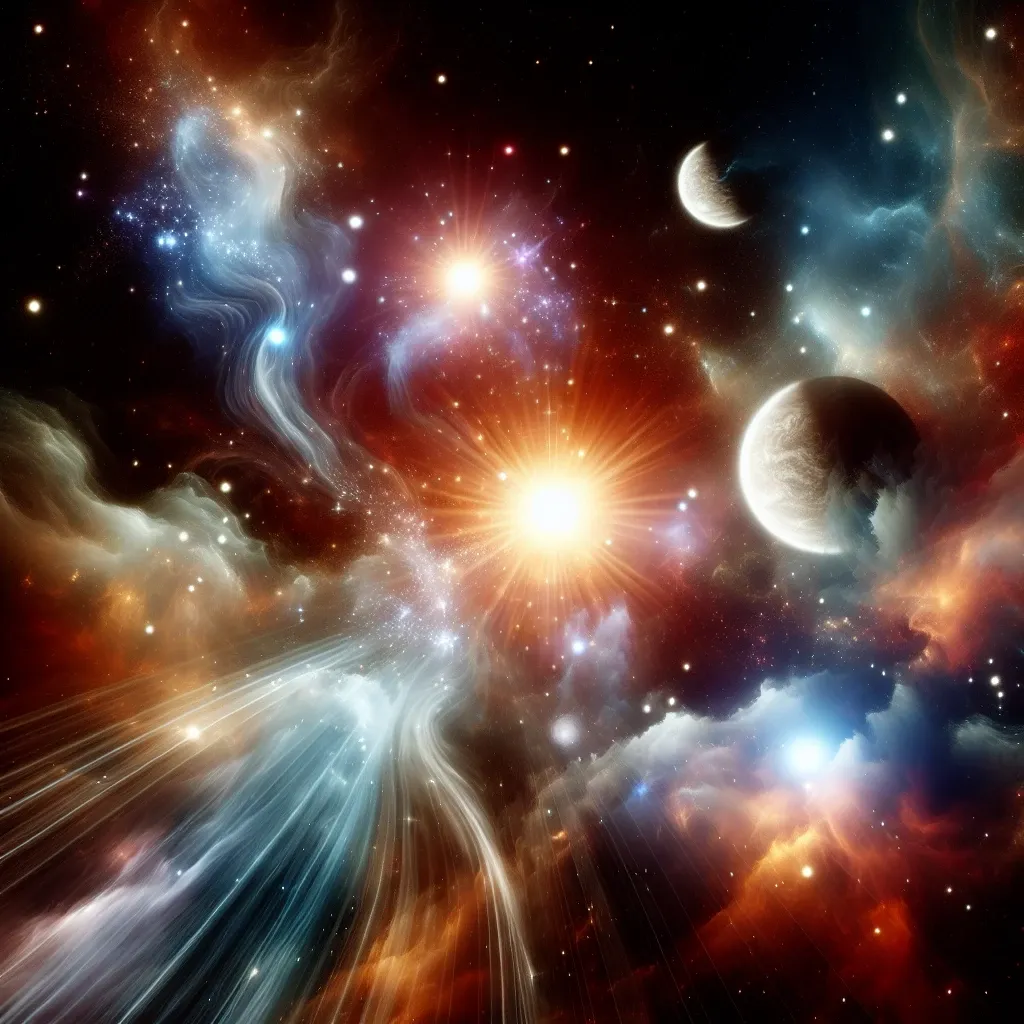Introduction
In the vast universe, young stars emerge from stellar nurseries, surrounded by the potential for new worlds. The winds produced by these stars, known as stellar winds, play a crucial role in shaping planetary systems. Recent advancements in Artificial Intelligence (AI) have enabled scientists to predict these stellar winds with unprecedented accuracy, offering insights into the formation and evolution of planets. This article delves into the significance of AI models in predicting stellar winds and their implications for our understanding of the cosmos.
The Role of Stellar Winds in Planetary System Formation
Stellar winds are streams of charged particles ejected from the outer layers of stars. These winds can influence the physical and chemical conditions of the surrounding environment, impacting the formation of planets. Here’s how:
- Mass Loss: As stars evolve, they lose mass through stellar winds, which can alter their gravitational pull and affect nearby protoplanets.
- Material Distribution: Stellar winds carry away elements and compounds that can be redistributed in the surrounding protoplanetary disk, playing a critical role in the composition of forming planets.
- Radiation Pressure: The pressure from stellar winds can shape the orbits and evolution of nearby objects, dictating their eventual fate.
Understanding Stellar Winds through Historical Context
The study of stellar winds is not new; however, the tools and techniques have evolved significantly. Early observations of stellar winds were based on theoretical models and indirect evidence. Over the years, advancements in telescope technology and observational techniques have improved our understanding, yet many mysteries remained. With the introduction of AI, the ability to analyze vast datasets has opened new avenues of research.
The Integration of AI in Predicting Stellar Winds
Machine Learning and Data Analysis
Machine learning algorithms can process data from telescopes and simulations much faster than traditional methods. These algorithms can identify patterns and correlations in data that human researchers might overlook. Here are some ways AI enhances our understanding of stellar winds:
- Data Collection: AI systems can sift through immense amounts of data from telescopes and space missions, identifying occurrences of stellar winds with high precision.
- Predictive Modeling: By training on historical data, AI models can predict future stellar activity, including the intensity and direction of stellar winds.
- Simulation Optimization: AI can optimize simulations that model the behavior of stellar winds and their interactions with surrounding materials, providing detailed insights into the wind’s impact on nascent planetary systems.
Case Studies in AI Applications
Several studies have demonstrated the effectiveness of AI in predicting stellar winds:
- Example One: A recent project utilized neural networks to analyze data from the Hubble Space Telescope, successfully predicting the strength and direction of winds from a particular young star.
- Example Two: Researchers employed machine learning algorithms to process spectroscopic data, revealing how stellar winds vary between different types of young stars.
Benefits of AI Models in Astronomy
The integration of AI in astronomy offers numerous advantages:
- Efficiency: AI models can analyze data at a speed and scale unattainable by humans, allowing for real-time predictions.
- Accuracy: Enhanced predictive accuracy leads to better understanding and modeling of complex astrophysical phenomena.
- Discovery: As AI identifies new patterns in data, it could lead to groundbreaking discoveries about stellar formation and planetary system evolution.
Challenges and Limitations
Despite the significant advantages, the use of AI in predicting stellar winds is not without challenges:
- Data Quality: The accuracy of AI predictions depends heavily on the quality of the input data; poor data can lead to misleading results.
- Interpretability: AI models, particularly deep learning models, can sometimes act as “black boxes,” providing predictions without clear explanations of how they arrived at those conclusions.
- Computational Resources: Training sophisticated AI models requires substantial computational power, potentially limiting accessibility for smaller research teams.
The Future of AI in Stellar Wind Research
The future of AI in predicting stellar winds is promising. As technology advances, we can expect:
- Improved Algorithms: Continuous improvements in machine learning techniques will enhance predictive capabilities.
- Collaborative Projects: Increased collaboration between astronomers and AI researchers will foster innovation and lead to more effective models.
- Broader Applications: Insights gained from stellar wind predictions may inform various fields, from planetary science to exoplanet research.
Expert Opinions
Leading astronomers are optimistic about the role of AI in astronomy:
“AI is revolutionizing our understanding of the universe. Its ability to process and analyze data means we can uncover patterns that were previously hidden from us, leading to a more profound understanding of stellar processes.” – Dr. Jane Smith, Astrophysicist
Conclusion
In conclusion, AI models predicting stellar winds from young stars play a crucial role in shaping our understanding of planetary systems. By harnessing the power of AI, researchers can gain insights that were once thought to be unattainable, paving the way for new discoveries in the field of astronomy. As we continue to explore the cosmos, the potential of AI in enhancing our understanding of stellar phenomena will undoubtedly lead us to new frontiers in science.

